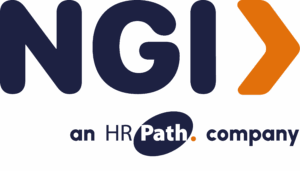When it comes to implementing new HR software, testing isn’t just another box to check. It is the safety net that ensures your investment delivers what you need from day one. At NGI, we have spent years guiding organizations through implementations, rollouts, and upgrades. We have seen what works, what fails, and the small details that make the biggest difference.
Here’s our expert perspective on building a testing process that not only works but also protects your organization from costly surprises.
Q: What does an ideal testing timeline look like during a rollout?
A: A solid testing timeline for HR software usually runs between three to six months, depending on complexity. Rushing it rarely ends well, but overextending it can slow momentum. We recommend breaking it into clear phases that align with real-world operations:
Discovery and Planning (Week 1–2)
Define your business goals, testing scope, and success criteria. This is where expectations are set and priorities are agreed upon.
Configuration and Setup (Week 3–6)
Align workflows, permissions, and integrations to match how your organization operates.
Data Migration and Validation (Week 7–10)
Clean, map, and test legacy data to ensure it works correctly in the new system.
Functional and Regression Testing (Week 11–14)
Validate critical HR modules such as time tracking, payroll, onboarding, and performance.
User Acceptance Testing (Week 15–17)
Put the system in front of real users to simulate live scenarios and gather valuable feedback.
Go-Live Readiness and Contingency Planning (Week 18)
Conduct final checks, prepare rollback plans, and secure stakeholder sign-off. Following this timeline ensures testing is thorough without holding up your go-live date unnecessarily.
Q: What is the most commonly missed type of test that leads to issues later?
A: Integration testing is often underestimated, and it is a costly oversight. HR software does not exist in a bubble; it interacts with payroll, time tracking, CRM, and ERP systems. If these are not working together correctly, you are setting yourself up for:
- Data mismatches, such as duplicate employee records
- Payroll errors that appear after launch
- Compliance reporting failures due to broken data flows
Another area that often gets overlooked is negative testing, checking how the system handles bad data, invalid inputs, or unexpected user actions. Most defects we see after launch could have been caught if negative testing scenarios were included early on.
Q: What are best practices when it comes to User Acceptance Testing (UAT)?
A: UAT is where your implementation meets reality. To make it effective:
- Start early by involving business users during test planning, not just execution
- Simulate real workflows, including time management, onboarding, leave approvals, and performance reviews
- Set clear acceptance criteria so you know what a pass looks like for each case
- Use production-like data with anonymized but realistic information to spot real-world issues
- Create a feedback loop so user insights are acted on quickly
- Prioritize usability alongside functionality
Q: Can you share a story where testing saved a client from a major post-launch issue?
A: One of our most memorable saves involved a mid-sized oil organization rolling out a new HRIS platform. During regression testing, we discovered that a recent software update had broken the integration with their payroll provider.
If this had gone unnoticed, thousands of employees would have received incorrect pay. Using our automated regression scripts, we caught the issue before it ever hit production. The fix was implemented, retested, and validated, saving the client from both a financial hit and a serious blow to their reputation.
Q: How do you coach clients to involve end users in the testing process?
A: We encourage our clients to think of end users as co-pilots, not passengers. Their involvement increases accuracy, adoption, and satisfaction post-launch. Here’s how we make that happen:
- Start with empathy to understand user pain points before writing test scripts
- Use focus groups of HR staff, managers, and employees to capture different perspectives
- Gamify UAT with scorecards, badges, or small incentives to keep engagement high
- Create a user community where testers can share tips and challenges
- Train the trainers so internal champions can guide others through testing and adoption
This approach strengthens test coverage and fosters confidence well before go-live.
HR Software Testing Best Practices That Drive Successful Implementations
Testing is more than a checklist. It is your insurance policy against failure. Whether it is preventing a payroll disaster, catching data mismatches, or ensuring your HR team enjoys using the system, the right testing approach pays for itself many times over.
At NGI, our personal insight after years of working on HR software rollouts is simple: the earlier you embed testing into your project plan, the better the results. Do not wait until configuration is complete to start thinking about test cases. Involve your end users, test integrations thoroughly, and keep a living test plan that evolves alongside your implementation.
Actionable next step: If your organization is preparing for a rollout, schedule a dedicated testing strategy session now. Map your timelines, assign testing roles, and identify any integration points that need extra attention. Doing this before the first line of configuration is built gives you the best shot at a smooth, successful launch, and that is the kind of confidence NGI delivers every time.
